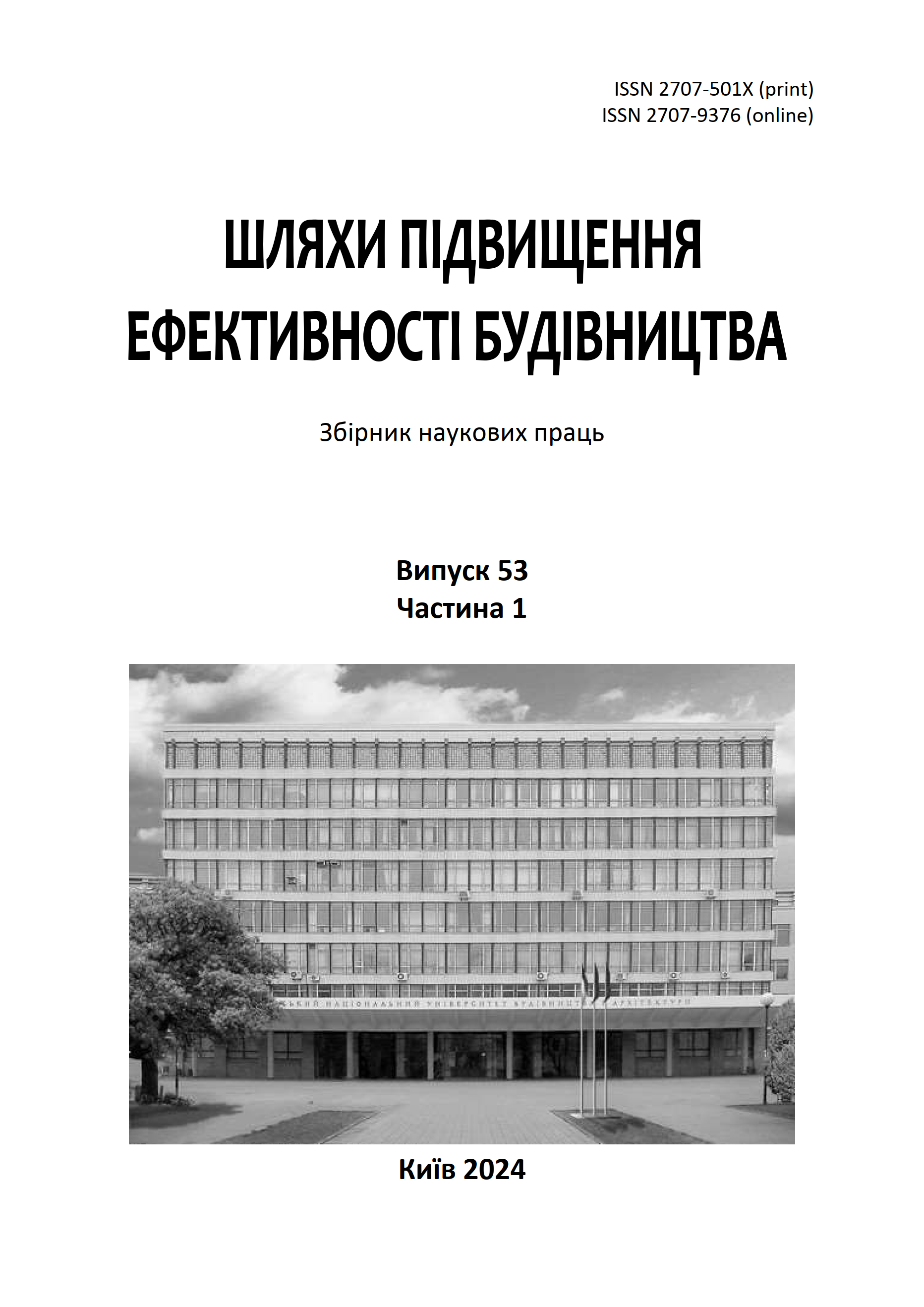Elimination of the consequences of armed aggression in Ukraine: application of modern technologies in the inspection of damaged buildings and structures
DOI:
https://doi.org/10.32347/2707-501x.2024.53(1).31-38Keywords:
technical survey, geographic information systems, elimination of the consequences of armed aggression, unmanned aerial vehiclesAbstract
This study aims to consider the improvement of technical inspection methods in the context of military conflict. Taking into account the factor of human safety in the survey process, the search for optimal methods and technologies for data collection and analysis is carried out, in particular, the use of modern technologies such as unmanned aerial vehicles (UAVs) and geographic information systems (GIS) is considered. The use of drones allows for quick and efficient surveys of hard-to-reach areas and the collection of high-quality damage data. The integration of UAVs with GIS provides a systematic view of large-scale destruction problems and helps to make informed decisions on how to address the consequences of armed aggression. Despite the advantages of using these technologies, their limitations should be taken into account. The combination of different survey methods allows to obtain the most complete and accurate information about the condition of buildings and structures, which is key in making decisions on the restoration and reconstruction of the affected areas. The study examined the practical use of these technologies within the framework of the Rebuild ua project, which digitized the main destructions in Chernihiv, Sumy, and Kyiv regions. The use of unmanned aerial vehicles in combination with geographic information technologies allows to systematize, analyze, obtain visual information and images with geometric data, which simplifies the process of damage assessment and decision-making during the survey procedure. GIS technologies are also capable of analyzing geographic data, visualizing damage on a map, locating damaged objects and assessing their damage. The integration of GIS technologies and unmanned aerial vehicles with other systems makes it possible to simplify decision-making on the priorities of liquidation and recovery.
References
Білошицька Н., Татарченко З., Ревека, А., Лобко Д. Аналіз сучасних методів проведення технічного обстеження будівель та споруд. Містобудування та територіальне планування, 2022, 79, 45–56. DOI: https://doi.org/10.32347/2076-815x.2022.79.45-56
Гураль О.О. Технічне обстеження будівель і споруд за допомогою безпілотних літальних апаратів: кваліфікаційна робота магістра за спеціальністю „192 Будівництво та цивільна інженерія“. Тернопіль: ТНТУ, 2022. 70 с.
Методика проведення обстеження та оформлення його результатів: Наказ Міністерства розвитку громад та територій України від 06 серпня 2022 року № 144. URL: https://zakon.rada.gov.ua/laws/show/z0898-22#Text.
Порядку виконання невідкладних робіт щодо ліквідації наслідків збройної агресії російської федерації: Постанова Кабінету Міністрів України від 19 квітня 2022 р. № 473. URL: https://zakon.rada.gov.ua/laws/show/473-2022-%D0%BF#Text
ДСТУ-Н Б В.1.2-18:2016. Настанова щодо обстеження будівель і споруд для визначення та оцінки їх технічного стану. [Чинний від 2017-04-01]. URL: https://online.budstandart.com/ua/catalog/doc-page.html?id_doc=65833
Тростянець. Спустошене місто з понівеченою інфраструктурою. URL: https://rebuildua.net/trostyanets
Юхименко, К., Писаренко, Н. Нові ринки для використання БПЛА в умовах надзвичайних ситуацій. XІV Міжнародна науково-практична конференція “В2B MARKETING”. 2020. URL: https://ela.kpi.ua/handle/123456789/33616.
Іщенко В.С. Система керування БПЛА. ББК 32.97 Т11. 2016. 155 с.
Луцький М. Розвиток міжнародного регулювання та нормативної бази використання безпілотних літальних апаратів. Вісник НАУ, 2015, № 4, С. 5–14.
Cefalo R., Zieliński J.B., Barbarella M. New Advanced GNSS and 3D Spatial Techniques: Applications to Civil and Environmental Engineering, Geophysics, Architecture, Archeology and Cultural Heritage. Luxemburg: Springer, 2017. DOI: 10.1007/978-3-319-56218-6
Kilby T., Kilby B. Getting Started with Drones: Build and Customize Your Own Quadcopter. USA: Maker Media, 2016.
Toro F.G., Tsourdos A. UAV Sensors for Environmental Monitoring. Switzerland: MDPI, 2018. 64 p.
Reg Austin. Unmanned Aircraft systems; UAVS Design, Development and Deployment. A John Wiley and Sons, Ltd. Publication 2010. 332 p.
Civil Aviation Safety Authority, Australia. "Unmanned Aircraft and Rocket Operations": CASR Part 101. Australia: CASR, January 2003. 56 р.
Downloads
Published
How to Cite
Issue
Section
License

This work is licensed under a Creative Commons Attribution 4.0 International License.
Authors who publish with this journal agree to the following terms:
- Authors retain copyright and grant the journal right of first publication with the work simultaneously licensed under a Creative Commons Attribution License that allows others to share the work with an acknowledgement of the work's authorship and initial publication in this journal.
- Authors are able to enter into separate, additional contractual arrangements for the non-exclusive distribution of the journal's published version of the work (e.g., post it to an institutional repository or publish it in a book), with an acknowledgement of its initial publication in this journal.
- Authors are permitted and encouraged to post their work online (e.g., in institutional repositories or on their website) prior to and during the submission process, as it can lead to productive exchanges, as well as earlier and greater citation of published work (See The Effect of Open Access).

